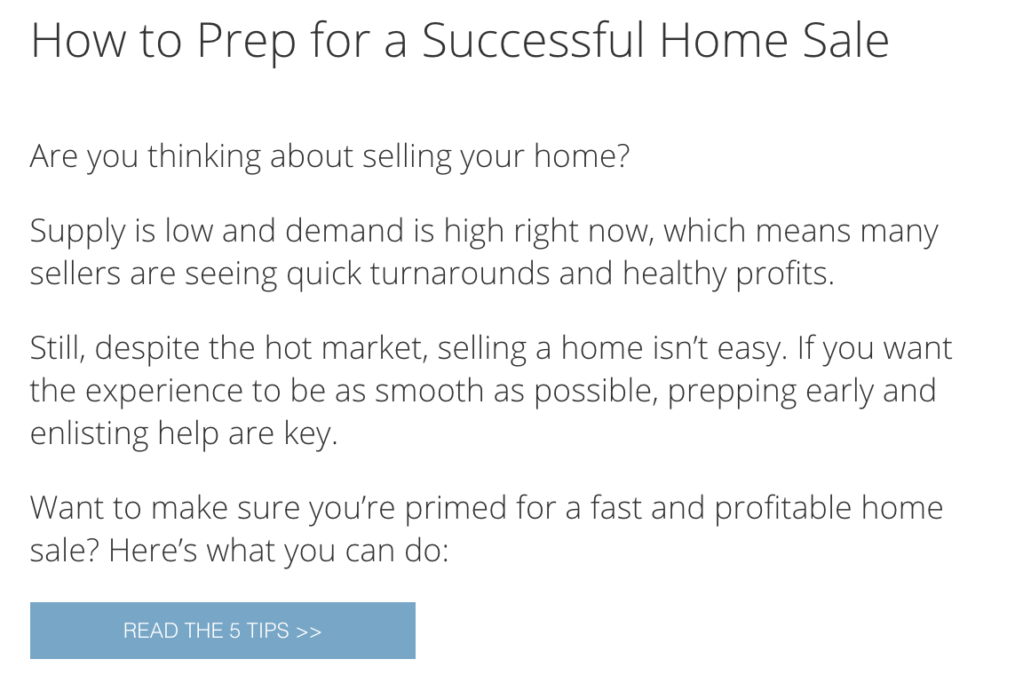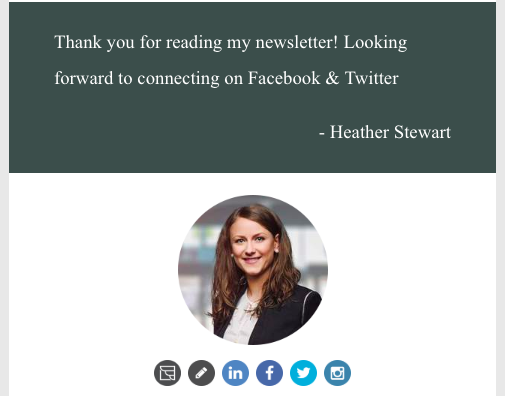Want to get more people paying attention to your marketing emails? Many small businesses see big results from a content marketing strategy, which often takes the form of the tried-and-true email newsletter.
Before we dig into how content marketing and email marketing work together, let’s start at the very beginning. What exactly are content marketing and email marketing?
Content marketing is a form of marketing focused on creating, publishing and distributing content for a targeted audience online. Its purpose is to help companies create sustainable brand loyalty through building trust and rapport with the audience through sharing valuable, and often free, content instead of directly selling.
Email marketing is the act of sending a commercial message, typically to a group of people, using email. It is frequently used to enhance a business or brand’s relationship with current or previous customers and encourage loyalty, repeat business, and acquire new customers.
You’ll notice both of these marketing strategies have something important in common: building loyalty and repeat business through sending and sharing content.
The emails you send should have quality, relevant, and interesting content. They also need to be visually appealing. Finally, they need to have a purpose.
Let’s break down a marketing email into four basic parts:
- Subject line
- Body copy
- Call to action (CTA)
- Sign off/footer
Each of these parts should be seen as an opportunity to weave content marketing and email marketing together. Content completes an email, but when you take the time to thoughtfully write to your audience, that email becomes a powerful piece of your marketing strategy.
1. Subject line
There is endless research on the most and least effective subject lines. Not everyone is the research type, and if that’s you, there is an easy place to start: your own inbox.
Look at what you’ve been emailed over the last few days. You’ve probably got a whole bunch of examples at your fingertips. Ask yourself these questions:
- What emails are still sitting unopened?
- What did you immediately click on?
- And the opposite, what emails went straight to trash?
The answers to these questions likely have a lot to do with the subject line. A subject line is your email’s first impression, and you don’t have much time to make it. One study found you may have only 3 seconds to capture a reader’s attention. That’s essentially one quick glance. It’s important to make those 3 seconds count. Keep your subject line interesting, snappy, and something you’d click on.
Also, look at the emails you trashed right after reading the subject line. Why did you take that action?
- Did the subject line feel spammy?
- Does the person or company sending the messages email you too often?
- Do their emails deliver body content that’s different than the subject line?
Take a critical look at those examples and see what you can avoid with your own email sends. Always keep in mind the content marketing approach to email: you’re trying to help the reader, not close a deal. Make sure your subject line reflects that.
Speaking of email content, that leads us to our next point.
2. Body copy
If the subject line and calls to action are the bread of your email sandwich, the body copy is the meat.
Once you have their attention with your very clickable subject line, use your body copy to share quality, relevant, and industry adjacent content. The more relevant it is, the more it will be shared, and the more your name and brand get in front of potential customers.
First and foremost, your email copy needs to reinforce your subject line. If your subject line reads “10 Best Ways to Save Money Today,” then your email must list ten ways your audience can save money, not be a highlight reel of the success you’ve had this year or an ask to follow you on Facebook.
Here’s an example. We sent an email with the subject line, “Selling your house? Here’s how to prepare.” This is what the recipient sees once they open that email:

See how the content backs up the subject line? This is crucial to building trust and delivering on the expectations you set.
There are appropriate times to send emails highlighting a great year for your business. But it shouldn’t be every month and it shouldn’t be when you are setting expectations for something else with a subject line like the above. If you essentially promise one thing and deliver another, you are likely to see unsubscribes and even spam reports from unhappy recipients.
3. Call to action (CTA)
If you’re sharing a blog post, then you want people to go to your website and read it. Your call to action should read something like “read more.”
If you’re taking a poll, then you want people to answer the questions. That CTA could read “I’ll help!” to encourage visitors to help you gather data by taking your poll.
Bonus Content: Need a game plan? Grab a copy of our Email Marketing Roadmap.
If you want people to download content you’ve created, then you want them to know where and how to get it.
You get the picture. Read through your email and make sure you are asking recipients for something. You have an engaged audience reading your content, so be sure you take advantage of the opportunity. Make it clear what you want people to do and then make it easy for them to do it.
Pro tip: Calls to action are excellent for testing. For example, try “Visit blog” vs “Read more” and see which one gets clicked more.
4. Sign off/footer
Like dessert after a lovely dinner, the way you end an email can leave a lasting impression. Sometimes this simple task can be rather daunting. Our suggestion is to close your email with a personal touch, and most of all, include your contact info. Here’s an example:
Even if you don’t see an immediate monetary impact after an email campaign, know that these efforts go toward building trust within your network and positioning yourself as an expert in your field. People who have opted into your lists want to hear from you. Building emails can be time-consuming, but they are worth it.
Make content marketing and email marketing work together for you
In conclusion, emails do not exist without content. And writing effective emails is hard! Whether you love writing but don’t have time, or dread the task altogether, OutboundEngine can take this important but time-consuming task off your plate. Our team of marketing experts can make content marketing and email marketing work for you. Spend your time on growing your business.




![Better Email Etiquette Equals Better Marketing Results [16 Rules]](https://www.outboundengine.com/wp-content/uploads/shutterstock_411184843-1-400x250.jpg)

